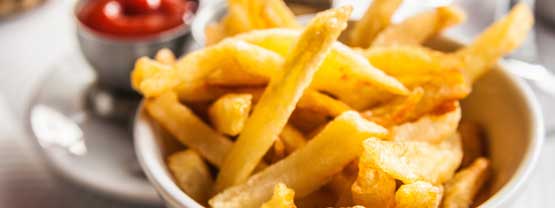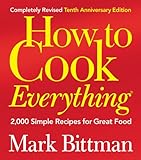Sautéing
Sautéing typically refers to cooking cutlets or small pieces of vegetables/onion in very little cooking fat over medium-high to high heat. Since you are cooking at high temperatures, you will need to use a cooking fat with a higher smoke point, such as canola oil, ghee, or coconut oil. You should stir or shake the skillet or sauté pan constantly.1
Pan frying

Pan frying is another common cooking method that requires a skillet or sauté pan and some kind of cooking fat. Pan frying is generally done at lower temperatures than sautéing ( medium to medium-high heat), which makes butter (for moderate heat) or coconut oil (for high heat) good options. You'll need just enough fat to cover the bottom of the pan (up to 1/4 inch of fat/oil). Pan frying is used for a variety of foods (often not cut), including breaded meat and fish, pork chops, chicken breasts, and potatoes.1
Stir frying
Stir frying refers to cooking bite-sized pieces of meat and vegetables in just minutes over very high heat in cooking oil. A special pan known as a wok is very useful for stir fries.2
Deep frying

Deep frying is a cooking method that uses high heat and a large amount of fat or oil to produce exceptionally crispy foods. You will need to choose a cooking fat that can handle high temperatures, such as canola oil, lard, ghee, or refined coconut oil. You will also need enough oil to submerge whatever you are deep frying.
It is important that the oil be hot enough to avoid sogginess but not so hot that the outside burns before the inside is cooked through. If you plan to deep fry often, it is definitely worthwhile to buy a deep-frying thermometer so you can monitor the temperature of the oil accurately. When your food is done cooking, use a slotted spoon to lift it out and drain on a paper towel or wire rack.3
Boiling
Boiling is one of the most basic cooking techniques of all - after all, people joke and say they cannot even boil water when they want others to know how little they can cook! Boiling of course refers to the state when water or another liquid has reached a hot enough temperature (212 degrees Fahrenheit for water) that bubbles form and rise to the surface while the liquid moves vigorously. When you see this vigorous movement, you have what is known as a "rolling boil." Boiling is used to cook pasta, potatoes, vegetables, etc.4
Blanching
Blanching refers to the process of throwing vegetables and other foods into boiling water for a few minutes before quickly plunging them into an ice bath to stop the cooking process.5
Steaming

Steaming is the process of cooking foods using the hot steam produced by boiling water. Steaming is often thought of as a healthy cooking technique because a) you do not need any fat and b) it is supposed to preserve the vitamins in vegetables better than boiling. This is likely an overgeneralization, as some studies have found that boiling actually increases some nutrients in certain foods.
A simple way to steam food is to use a steamer basket. You just put the basket in a pot and bring a small amount of water to boil. You don't want the water to boil up past the basket, you just need to produce some steam. Once you have the water boiling, just put the food you want to steam on top of the basket and close the lid.
Simmering
Simmering is a state before boiling; the temperature is lower, and though the liquid is in motion, very few bubbles make it to the top. Simmering is integral to poaching and braising.4
Poaching
Poaching is a cooking method in which foods are cooked in simmering water and/or broth, milk, wine, juice, etc. Fish, eggs, and fruit are popular choices for poaching. It is a gentle cooking method, making it a good choice for delicate foods.6
Braising

Braising is a slow cooking method often used for tough cuts of meat. Before braising, the meat is often browned in a skillet before it is added to a pot, usually with some root vegetables and onions. The braising liquid is generally a flavorful broth that can be further enhanced with wine, vinegar, dried herbs, etc.
There should be enough liquid to submerge the meat and other ingredients about halfway. Depending on the recipe or your personal preferences, you can braise on the stovetop or in the oven. Whichever method you choose, cover the pot with a tight-fitting lid and simmer over low heat/at a low temperature. The braising liquid is then thickened (see below) to create a sauce.7
Stewing
Stewing is similar to braising except the ingredients are fully submerged in the liquid, such as in a soup or, as the name suggests, in a stew. Stewing generally involves meat/vegetables that have been cut into small pieces.8
Thickening

Thickening is making a liquid more dense, whether by adding a thickener such as egg yolk, flour, or starch (e.g. cornstarch or tapioca) or by heating a liquid until it reduces (see below).
Reducing
Reducing in cooking refers to boiling a liquid until it thickens, reducing its original volume. 9 It is a technique used to make sauces, syrups, etc.
Recommended Read

How to Cook Everything
If you are teaching yourself how to cook, this guide is a must have reference book.
check it out »Sources
- Fine Cooking - Sautéing vs. pan-frying
- Cooking Light - Cooking Class: Stir-Frying
- Food52 - Deep Frying Without Fear
- Cooking Light - Cooking Class: Boiling and Simmering
- The Kitchn - How to Blanch Vegetables
- Campbell's Kitchen - Poaching, Boiling & Steaming
- Cooking Light - Cooking Class: Braising
- The Kitchn - The Difference Between Braising and Stewing
- Food Republic - How To Make A Reduction





